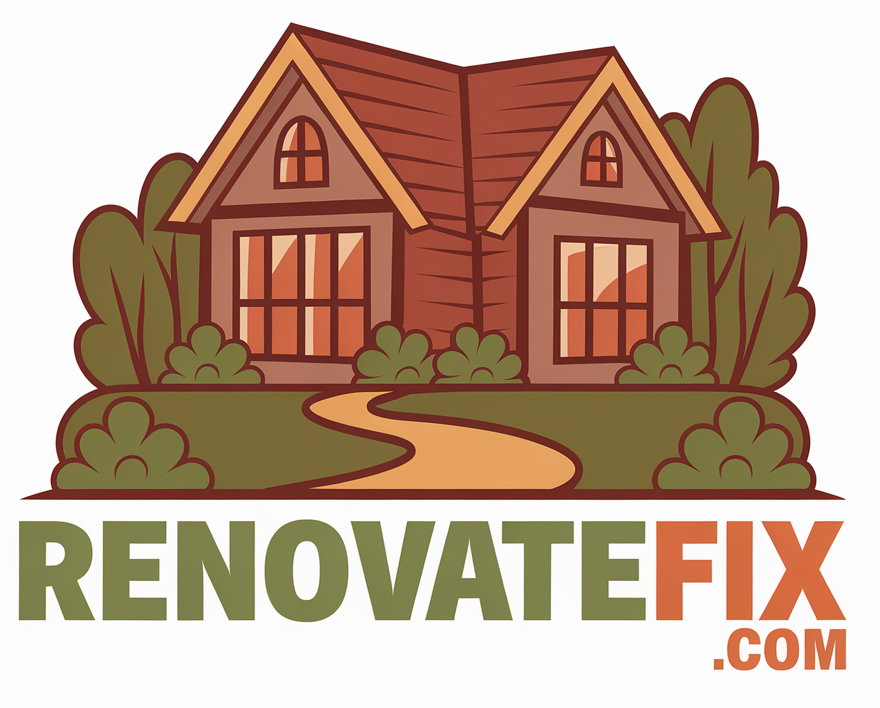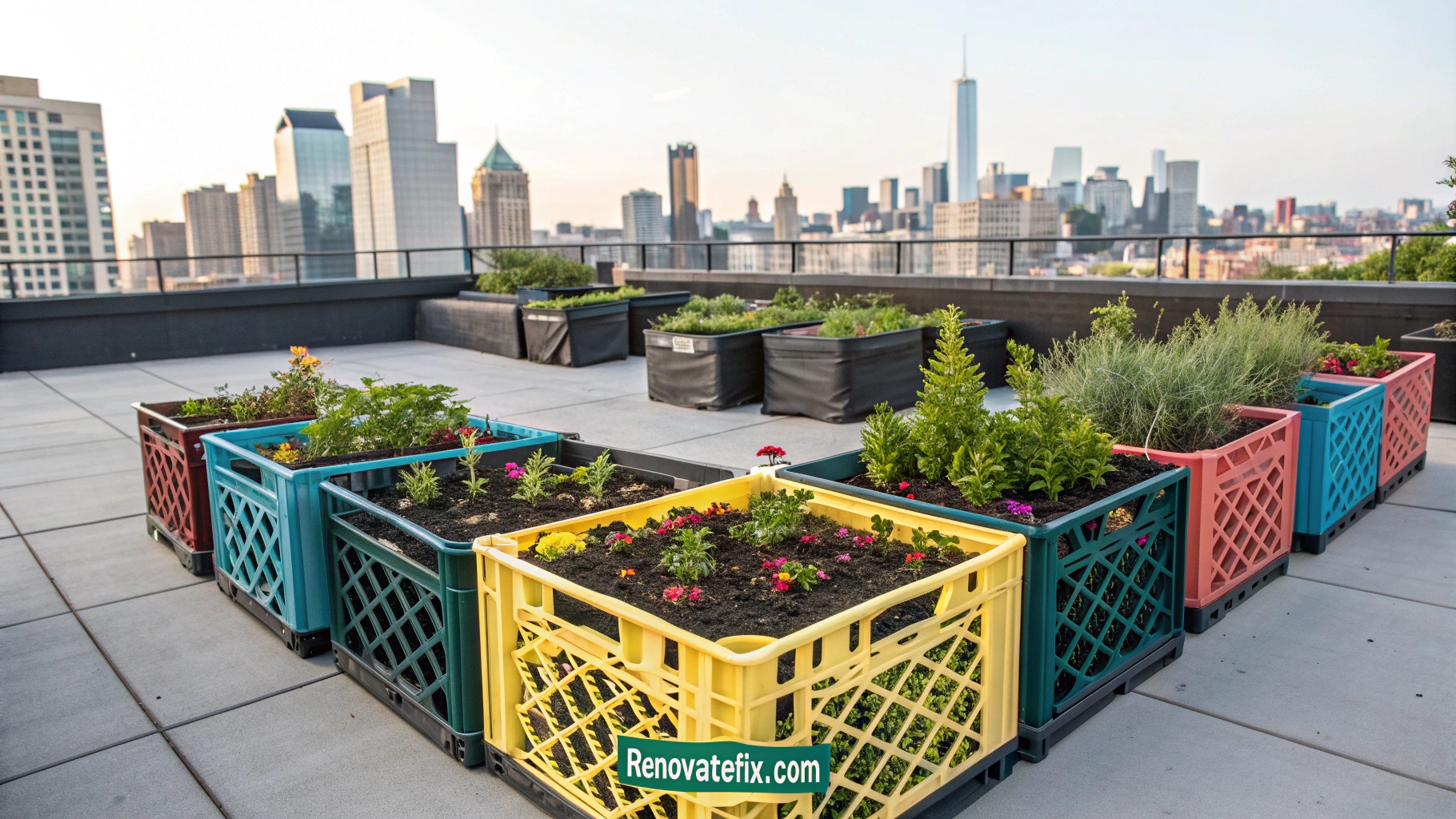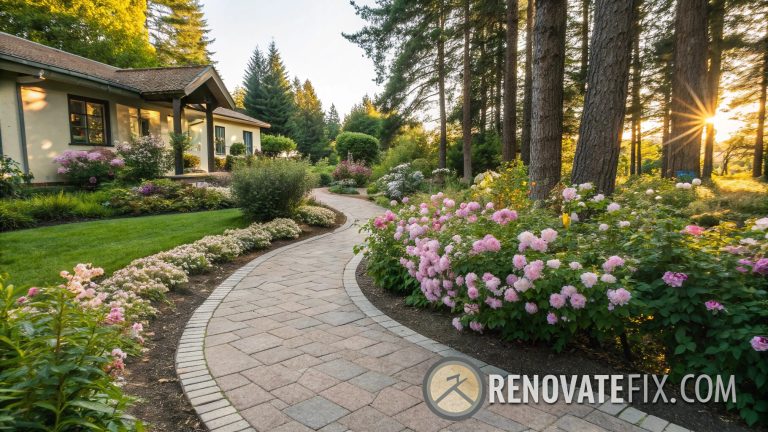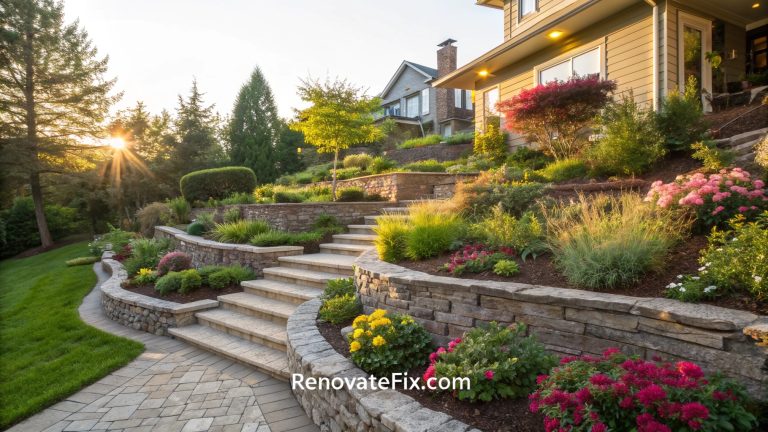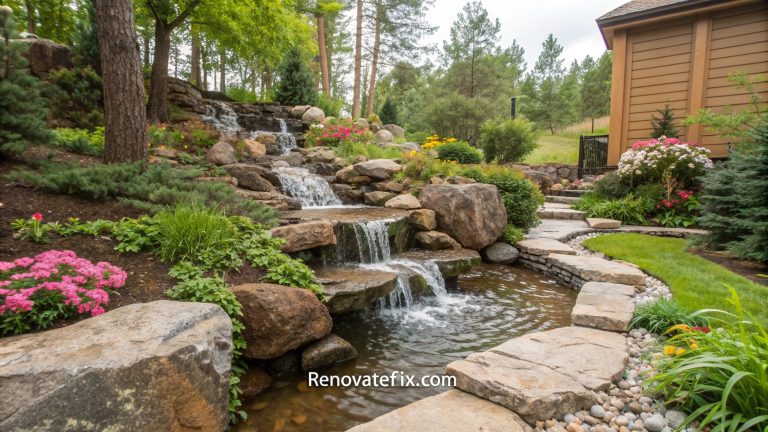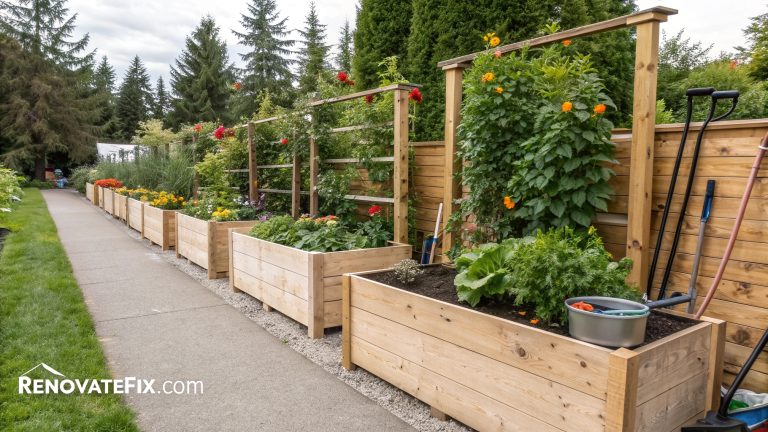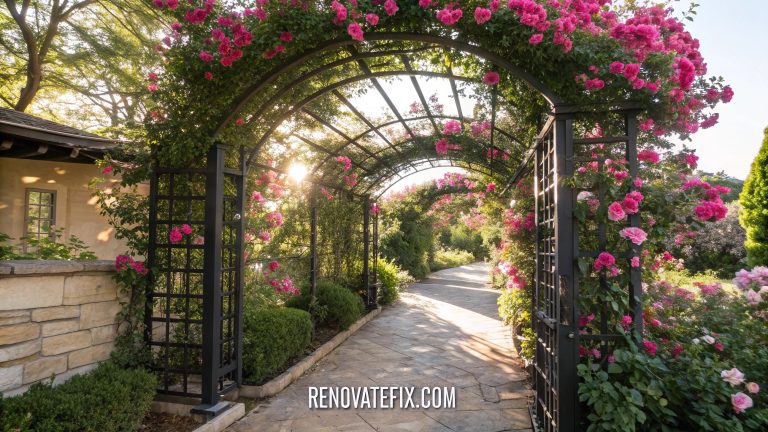Creative DIY Raised Planter Box Ideas for Your Garden
Creating your own raised planter boxes offers countless benefits for both novice and experienced gardeners.
These versatile gardening solutions provide improved drainage, reduced back strain, and protection from soil-borne pests while adding structure and visual interest to your outdoor spaces.
Whether you have a spacious backyard or a tiny balcony, constructing custom planters allows you to maximize growing space while expressing your personal style.
This collection of 25 innovative DIY raised planter box projects ranges from budget-friendly weekend builds to more elaborate garden features that will elevate your growing game.
With sustainable materials, clever upcycling approaches, and smart design techniques, these ideas will inspire your next gardening project.
15 Creative DIY Raised Planter Box Ideas
1. Tiered Cedar Wood Planters
Construct multi-level growing stations from weather-resistant cedar boards, creating an eye-catching vertical garden that maximizes space in compact areas.
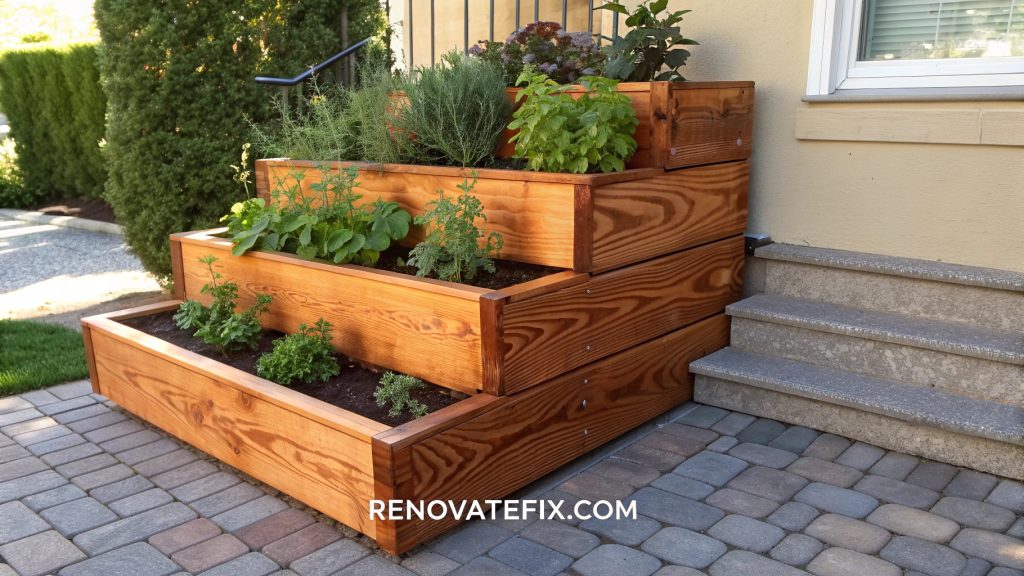
Cedar naturally repels insects and resists rot, making it ideal for garden applications without chemical treatments.
Build progressively smaller boxes stacked atop one another, secured with hidden brackets, allowing plants at various heights to receive adequate sunlight while creating dynamic visual interest.
2. Cinder Block Garden Beds
Arrange concrete blocks in geometric patterns, filling center holes with soil for additional growing spaces perfect for herbs or succulents.
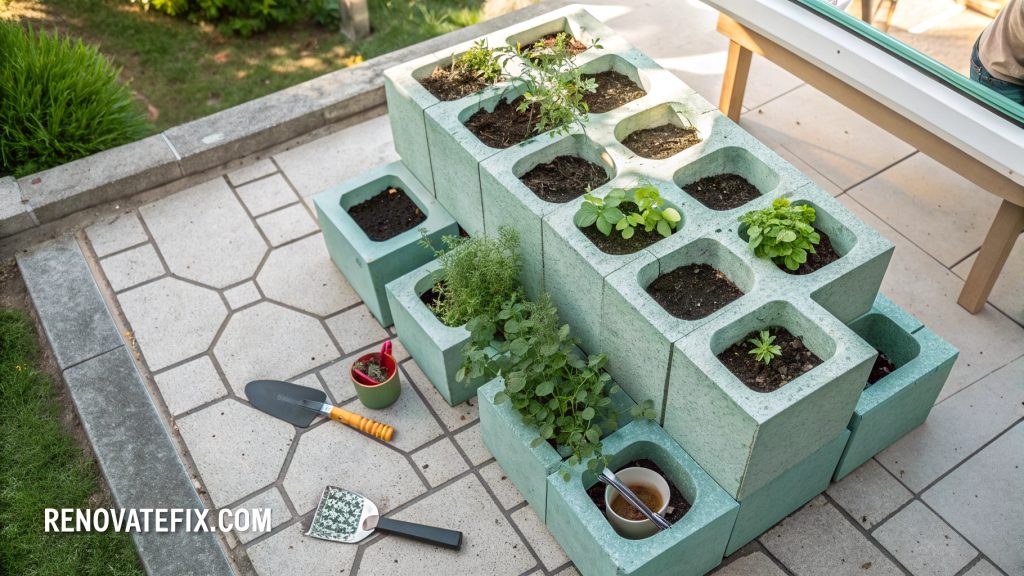
Stack blocks two high for comfortable gardening height, alternating positions to create interesting zigzag patterns along edges.
Paint exterior surfaces with outdoor-specific sealants in bold colors for personality while maintaining structural integrity against weather elements.
3. Galvanized Stock Tank Gardens
Repurpose metal livestock troughs into sleek, industrial-style planters that offer exceptional durability and water retention during hot months.
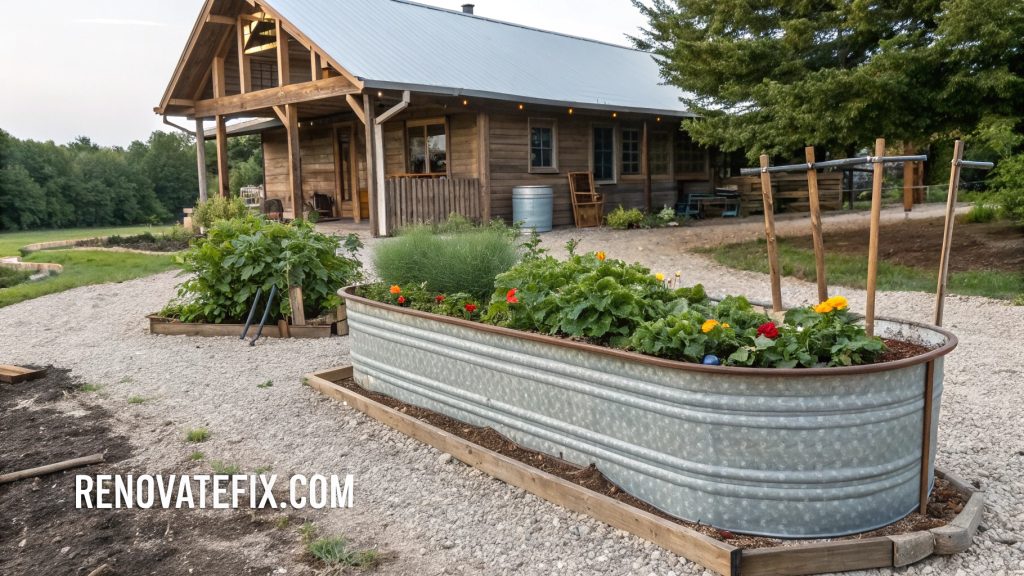
Drill drainage holes along bottom edges using metal bits, add gravel base layer for proper drainage, and consider adding wooden trim around upper edges for comfortable seating while tending plants.
Metal surfaces reflect sunlight, creating warm microclimates beneficial for heat-loving vegetables.
4. Railway Sleeper Beds
Craft robust, rustic planters from reclaimed railway timbers, creating substantial growing areas that withstand years of exposure to elements.
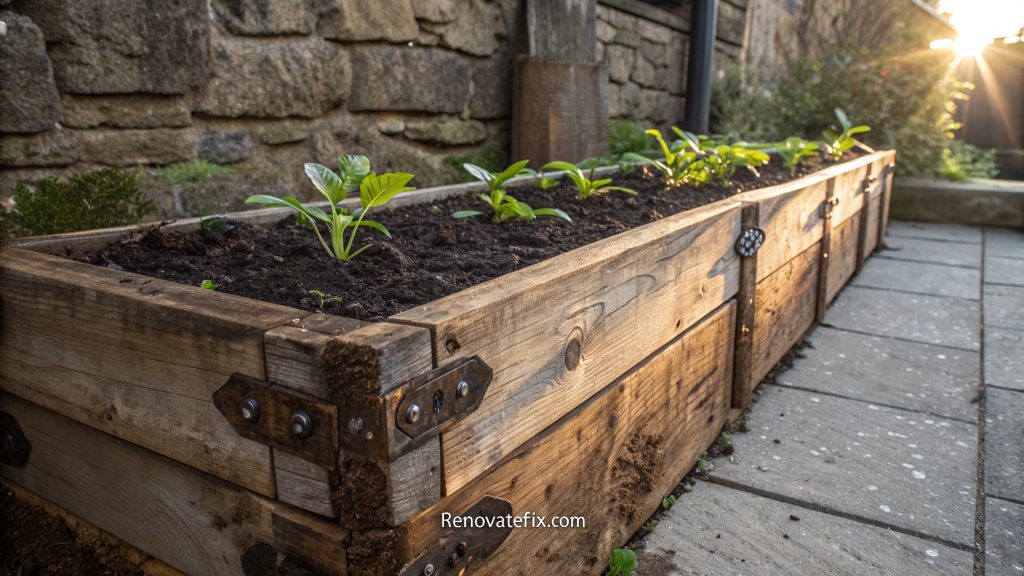
Position sleepers vertically for modern aesthetic or horizontally for traditional appeal, securing corners with metal brackets or notched joinery techniques.
Apply food-safe sealant if growing edibles, ensuring old creosote-treated wood is avoided for vegetable gardens.
5. Rolling Pallet Planters
Fashion mobile growing spaces from reclaimed wooden shipping pallets, attaching heavy-duty casters for effortless repositioning to optimize sunlight exposure throughout seasons.
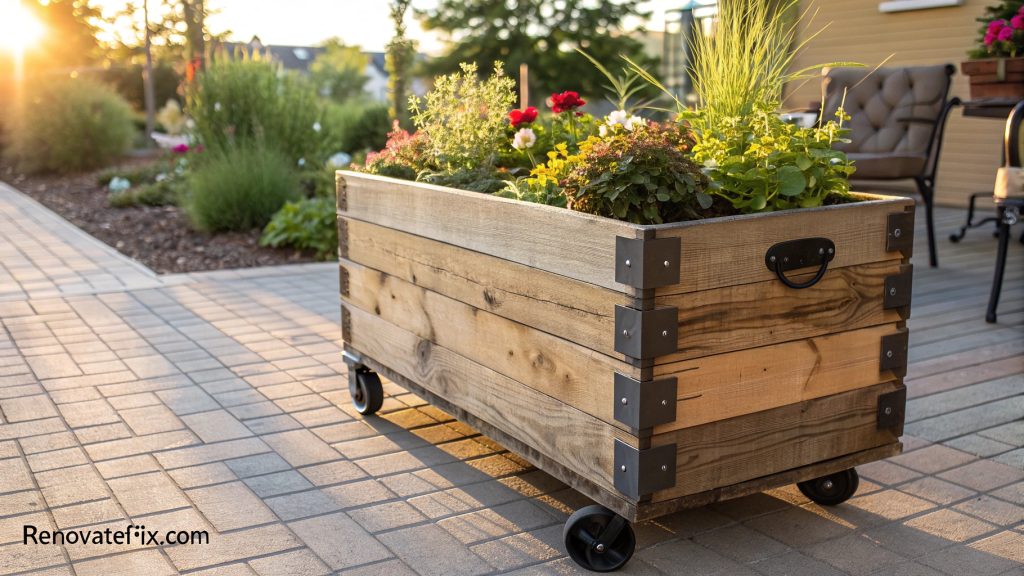
Reinforce pallet structure with additional cross-bracing, line interior with landscape fabric before adding soil, and install handles on ends for easier movement across deck or patio surfaces.
Apply non-toxic stain or paint for weather protection.
6. Brick Border Gardens
Create permanent, elegant growing areas using common building bricks arranged in decorative patterns, mortared together for stability while allowing sufficient drainage between units.
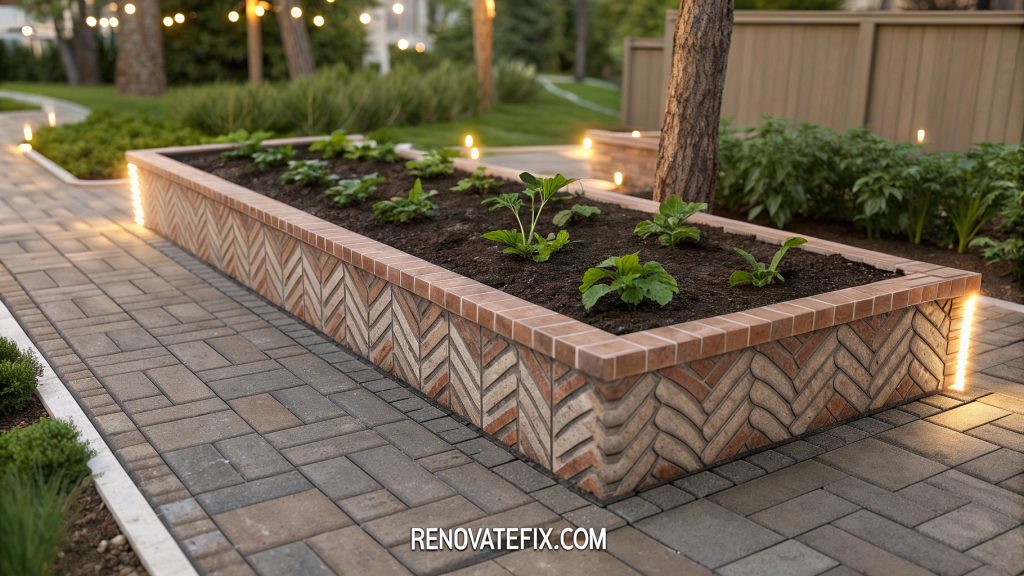
Alternate header and stretcher brick positions for visual rhythm, build to knee height for comfortable gardening, and cap with flat stones or pavers for occasional seating.
Bricks store daytime heat, releasing warmth overnight to extend growing seasons.
7. Gabion Stone Cages
Construct industrial-chic planters using wire mesh cages filled with decorative stones, creating unique textural elements while providing excellent drainage and thermal mass for plant roots.
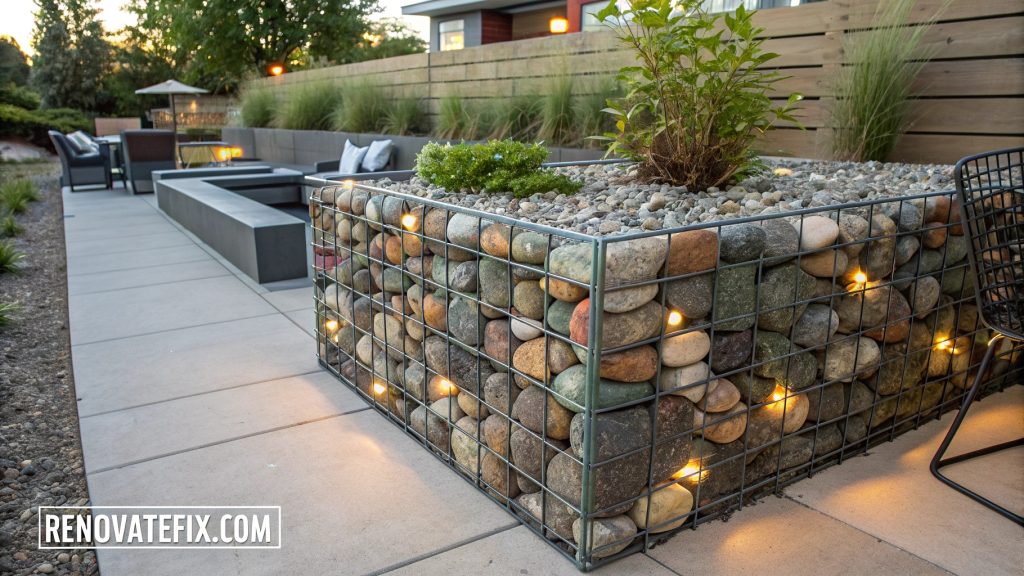
Form rectangular wire frames, fill with graduated stone sizes placing larger specimens along visible edges, insert landscape fabric liner before adding quality growing medium.
Stones absorb daytime heat, moderating soil temperature fluctuations.
8. Corner Cascade System
Build space-efficient corner units with graduated tiers that fit perfectly into yard angles, maximizing growing area in otherwise unused spaces.
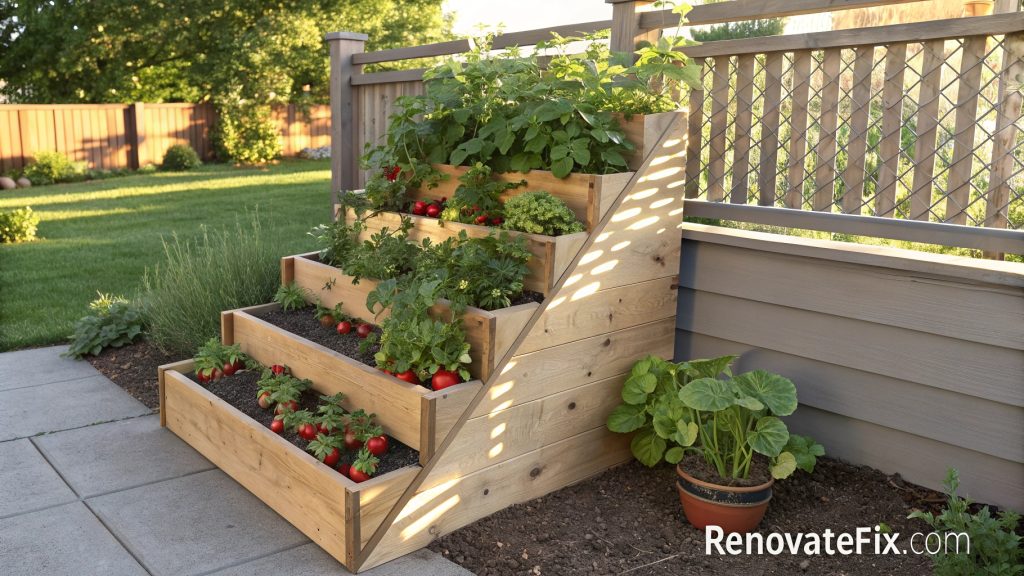
Construct wedge-shaped boxes decreasing in size as they ascend, install drip irrigation systems between levels for water conservation, and position taller crops at back with cascading varieties along fronts.
Angle boards slightly outward for maximum sunlight penetration.
9. Woven Willow Raised Beds
Weave flexible willow branches between sturdy corner posts, forming beautiful biodegradable planting containers with exceptional aesthetic appeal and natural character.
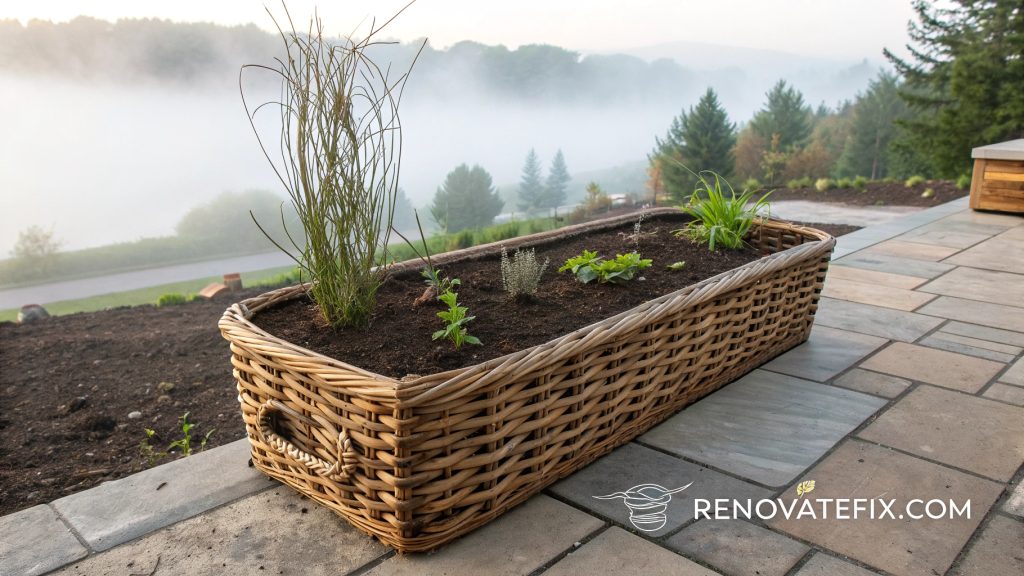
Harvest young willow shoots during dormant season, soak overnight for flexibility, weave horizontal patterns between vertical supports driving into ground for stability.
Living willow varieties may root, creating partially growing structures with seasonal changes.
10. Concrete Fabric Forms
Pour concrete into fabric molds to create organically shaped containers with unique textural qualities impossible to achieve through conventional forming methods.
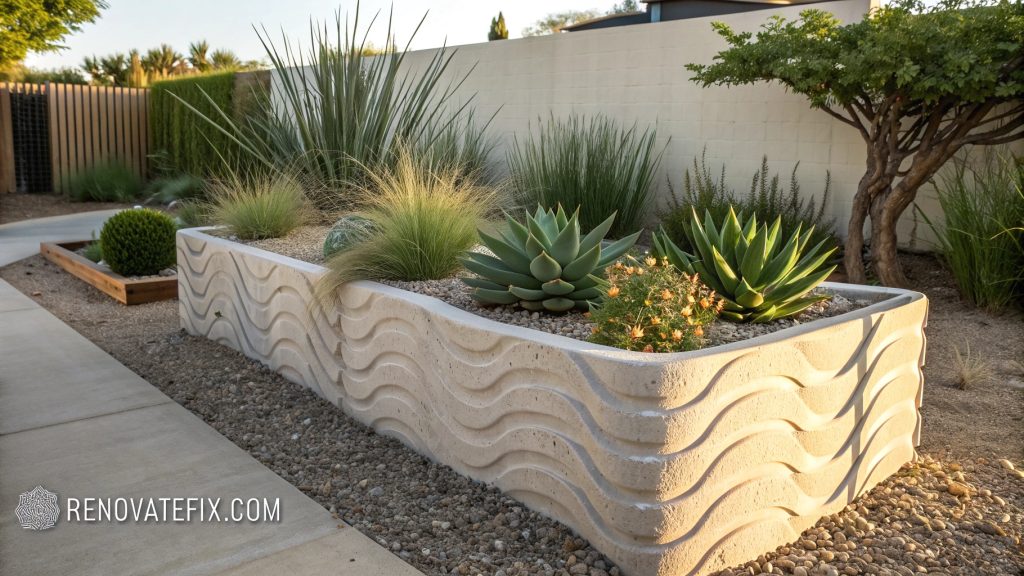
Drape burlap or canvas over mounded sand forms, saturate with concrete mixture, allow proper curing time before removing fabric and sand interior.
Resulting structures feature fabric impression patterns with undulating surfaces creating microhabitats for beneficial insects.
11. Log-Edged Woodland Gardens
Create naturalistic growing areas using fallen logs split lengthwise, arranged to form borders that gradually decompose while adding nutrients to surrounding soil.
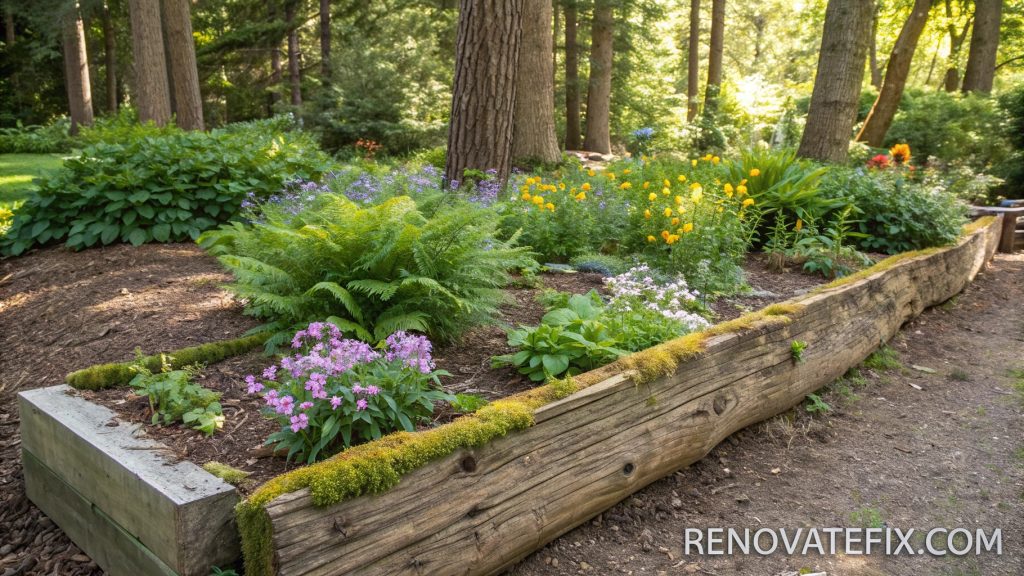
Select hardwood varieties for longevity, position flat-cut sides facing inward, anchor with wooden stakes driven through bark into ground below.
Moss will gradually colonize exposed surfaces, enhancing woodland aesthetic while harboring beneficial microorganisms.
12. Milk Crate Modular System
Connect plastic dairy crates into customizable configurations, creating lightweight modular growing systems easily reconfigured as garden needs evolve throughout seasons.
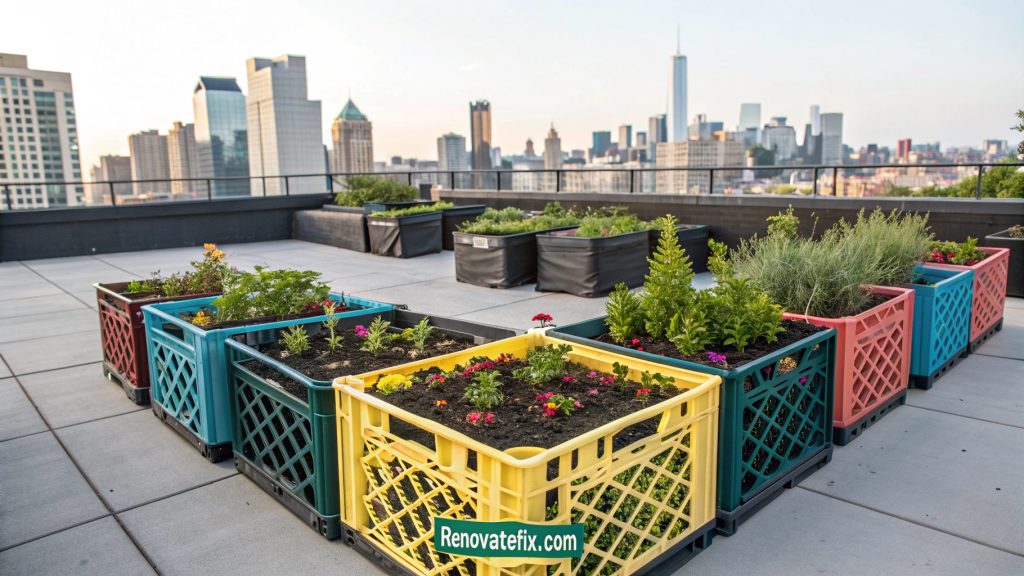
Attach units using heavy-duty zip ties, line with landscape fabric or coconut coir, fill with quality potting mix, disconnect and store flat during winter months.
Plastic construction resists rotting while providing excellent drainage through built-in ventilation holes.
13. Hubcap Flower Circles
Mount vintage automobile hubcaps to wooden frames, creating unusual circular planters with metallic accents that catch sunlight and add whimsical elements to garden spaces.
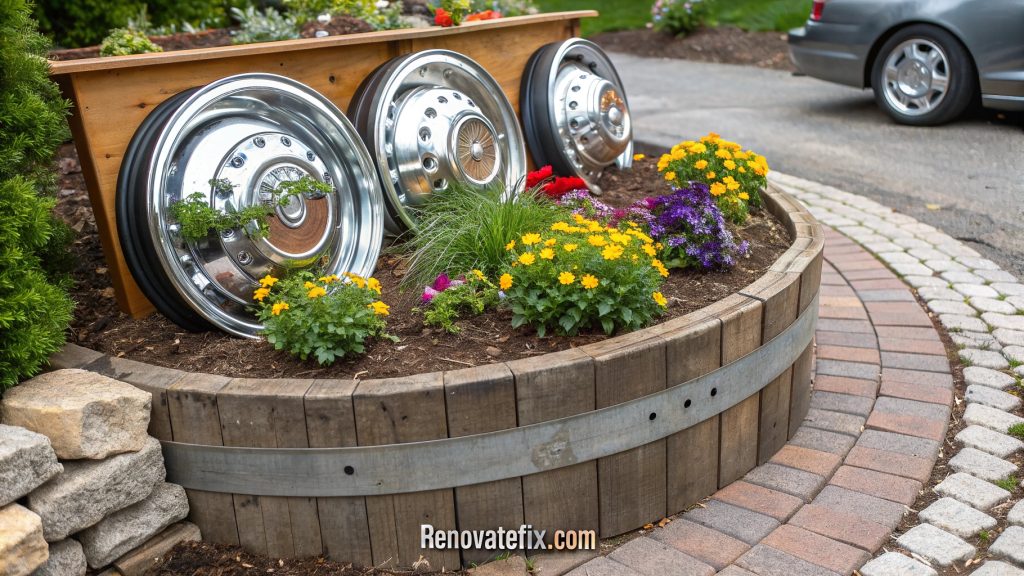
Select hubcaps with intricate patterns, drill drainage holes in bottom sections, attach to frames using metal brackets, apply rust inhibitor to prevent degradation.
Different vehicle models provide varied sizes for planting diversity.
14. Wine Barrel Vertical Gardens
Split oak barrels vertically, reinforce curved sections with internal bracing, mount against walls or fences creating space-efficient growing areas with rustic charm.

Preserve original metal bands for authenticity, drill drainage holes along lower edges, add cascading plant varieties that complement curved forms.
Wood patina develops character over time while resistant oak construction ensures multiple seasons of use.
15. Bamboo Frame Planters
Fashion elegant Asian-influenced growing containers using bamboo poles lashed together with natural fiber cordage, creating lightweight structures with exceptional strength.
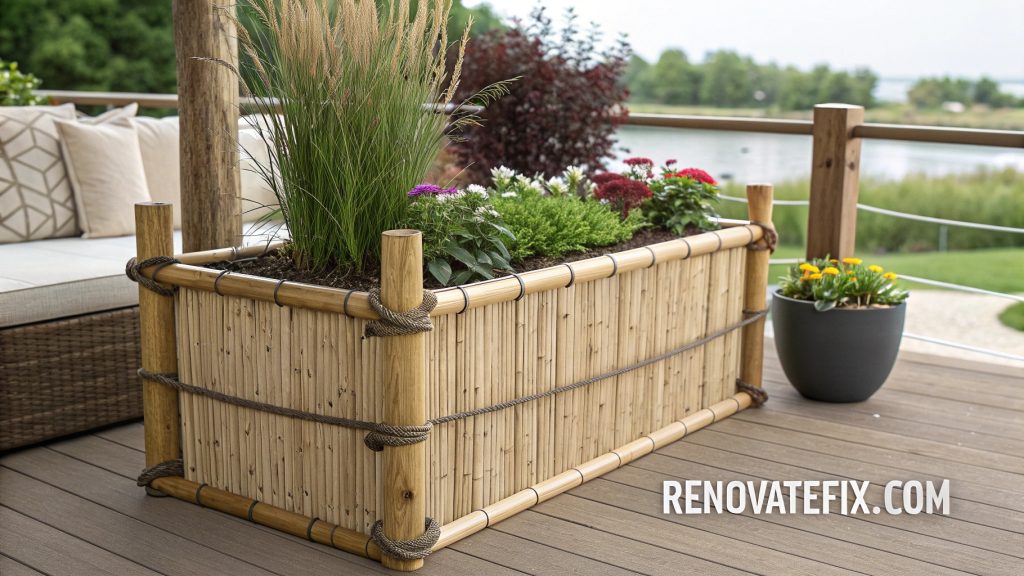
Select poles with similar diameters, secure corners using traditional lashing techniques, line interior with reed mats before adding growing medium.
Bamboo naturally resists insects while providing excellent drainage and airflow around root zones.
16. Corrugated Metal Panel Beds
Fashion industrial-style growing containers using agricultural roofing panels bent into rectangular forms, securing corners with metal brackets while creating striking material contrasts against organic plantings.
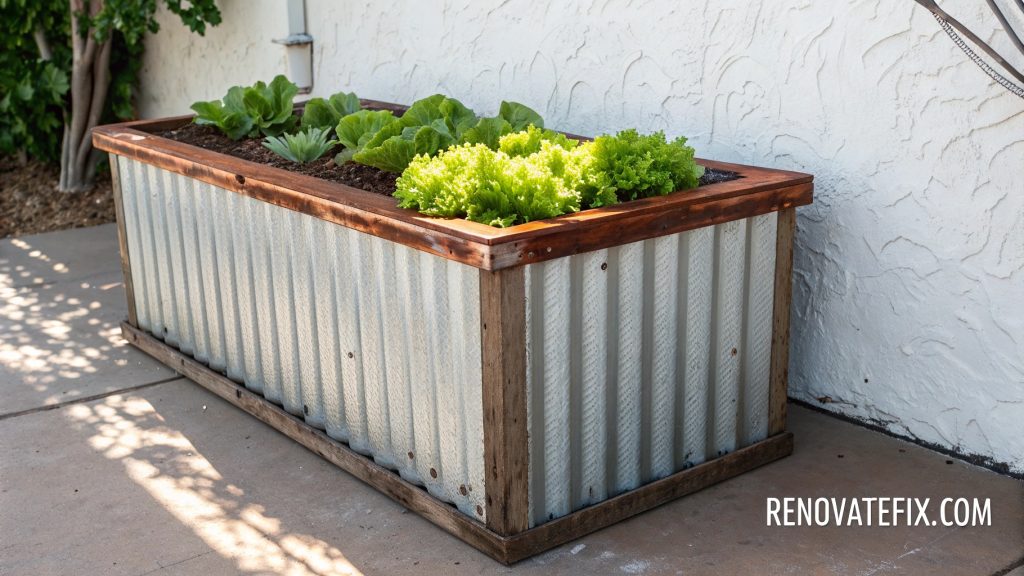
Cut panels using tin snips, fold edges for safety, attach to wooden frames for structural support, and allow natural patina development or paint with outdoor metal-specific coatings for color customization.
17. Dresser Drawer Gardens
Repurpose old furniture drawers into charming vintage planters, maintaining original hardware and finish details while creating nostalgic garden features with built-in mobility.

Drill drainage holes through drawer bottoms, apply waterproof sealant to interior surfaces, stack multiple drawers in pyramid arrangements or arrange in linear patterns along pathways.
Original drawer pulls serve as convenient handling points.
18. Woven Rebar Grid Systems
Construct modernist growing beds using welded reinforcement bar grids, creating strong frameworks that develop attractive rust patinas while providing excellent stability for deep soil volumes.
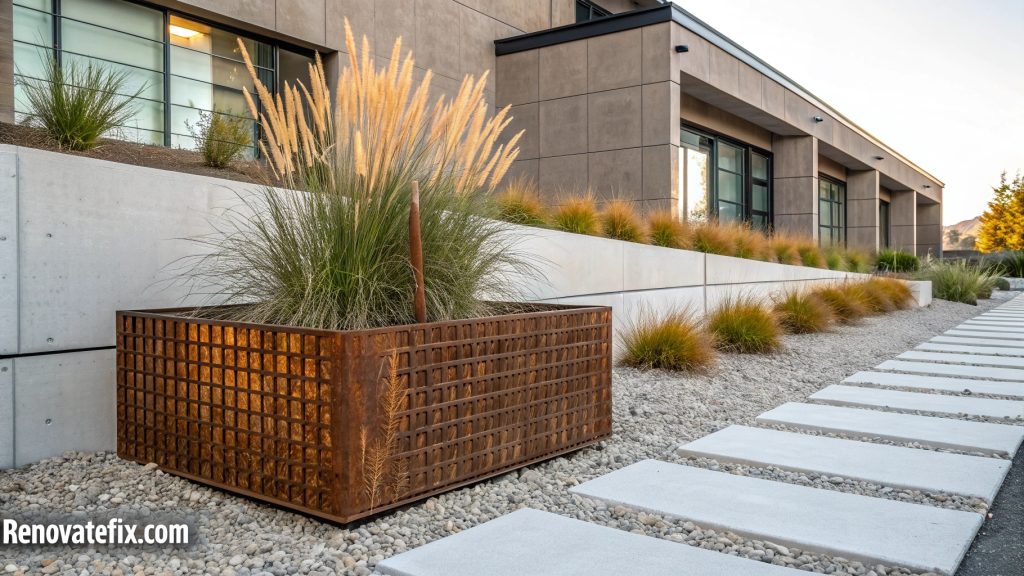
Cut rebar lengths using metal saw, arrange in grid patterns welding intersections, mount on concrete block footings for permanent installation.
Heavy-duty construction supports vigorous climbing plants using vertical extensions.
19. Drainage Pipe Sections
Slice large-diameter PVC or concrete drainage pipes horizontally, creating circular growing arenas with excellent moisture retention properties ideal for drought-tolerant plant collections.
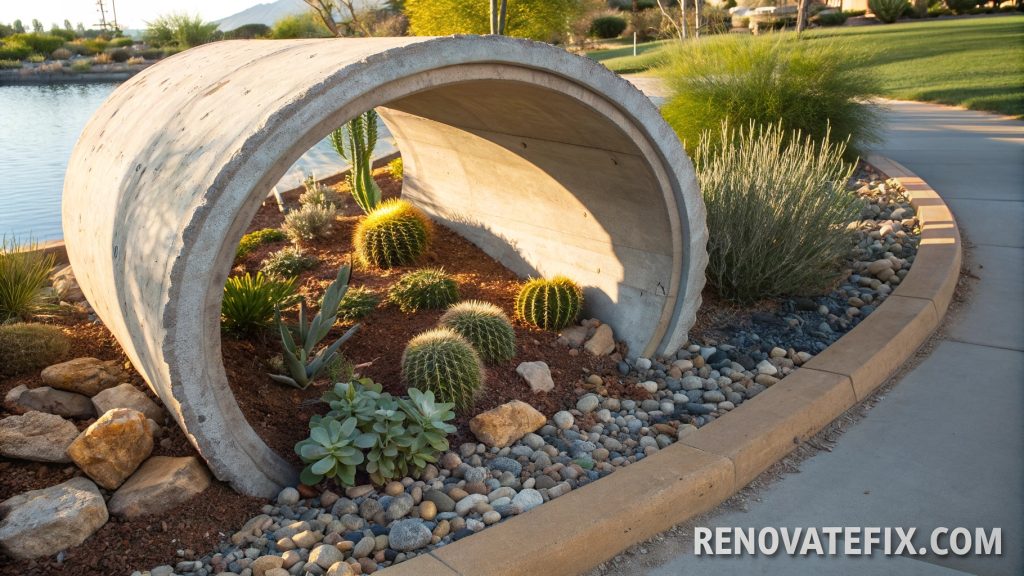
Cut pipes using reciprocating saw, position flat bottom sides directly on ground, drill additional drainage holes if necessary.
White PVC reflects sunlight while concrete versions absorb heat, creating different growing microclimates.
20. Floating Deck Surrounds
Integrate planting areas directly into outdoor living spaces by constructing raised boxes as borders around deck perimeters, creating seamless transitions between architectural elements and garden zones.
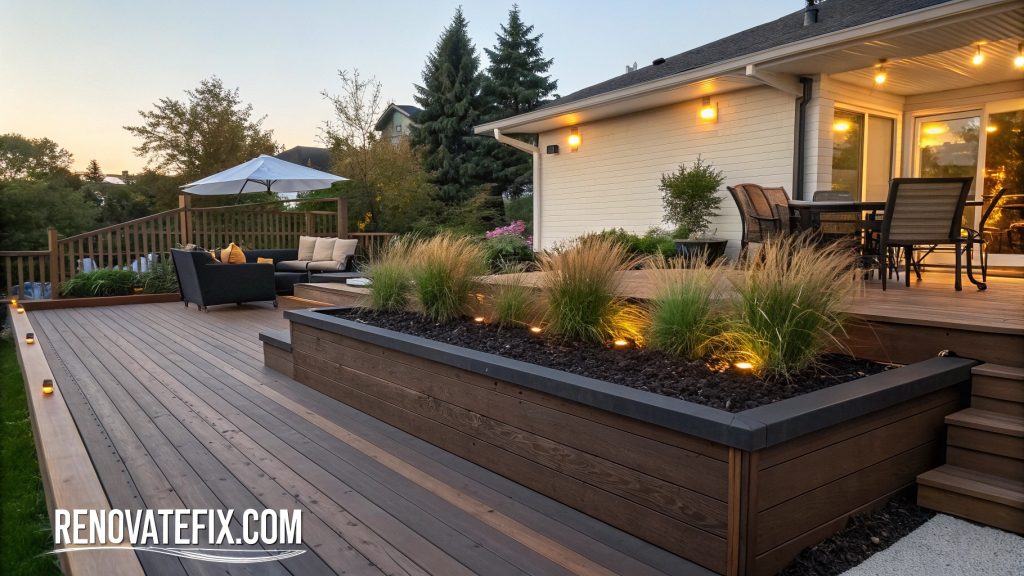
Build frames from pressure-treated lumber, attach directly to deck substructure, add bench seating along outer edges maximizing social function.
Built-in irrigation systems simplify maintenance while defining outdoor room boundaries.
21. Limestone Block Formations
Arrange cut limestone blocks in staggered patterns without mortar, allowing slight gaps between stones for beneficial insect habitat while creating elegant formal planters with excellent thermal properties.
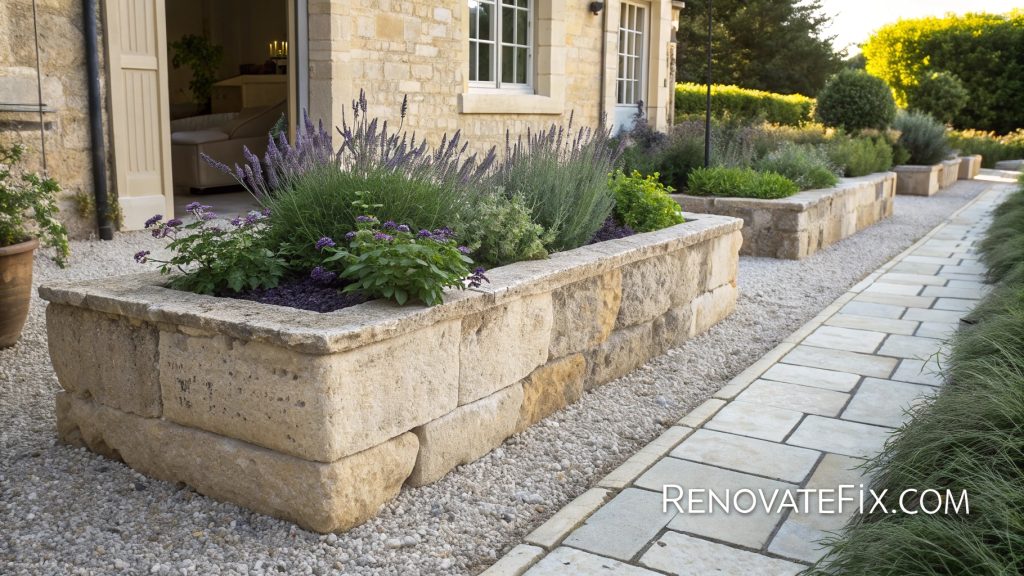
Select blocks with consistent heights, position on compacted gravel base for drainage, allow natural shifting over freeze-thaw cycles which strengthens overall structure.
Limestone gradually releases minerals beneficial to alkaline-loving plants.
22. Copper Pipe Framework
Assemble gleaming architectural planters using copper plumbing pipes and fittings, creating sleek modern forms that develop rich patinas while providing antimicrobial benefits to surrounding plants.
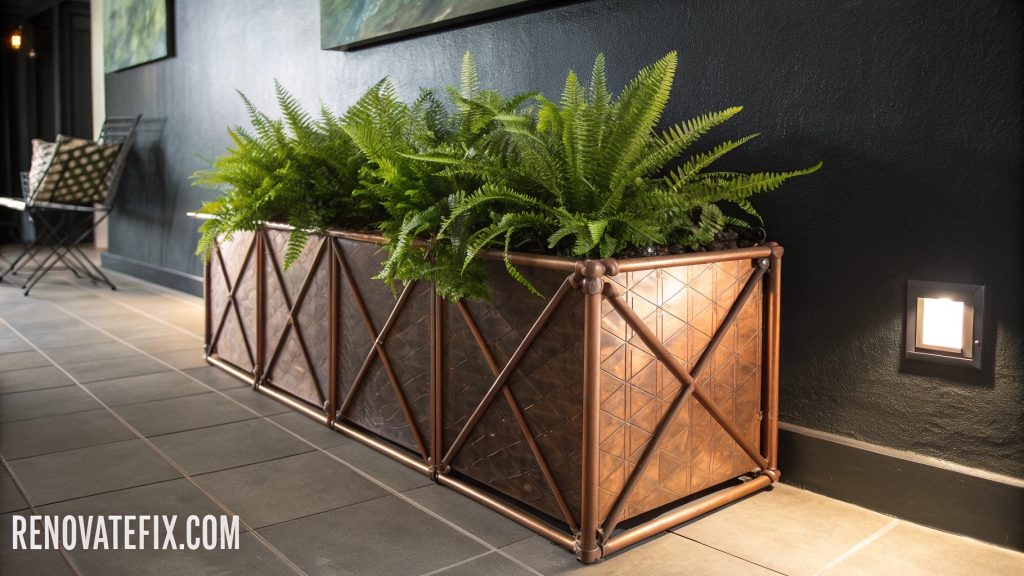
Cut pipes to desired lengths, connect using standard plumbing fittings, secure framework to wooden base, line with landscape fabric before filling.
Copper surfaces naturally deter slugs and snails through slight electrical charges.
23. Wattle Woven Hazel Branch Beds
Create traditional cottage garden planters using hazel branches woven between wooden stakes, forming flexible barriers that naturally decompose over several seasons adding organic matter to soil.
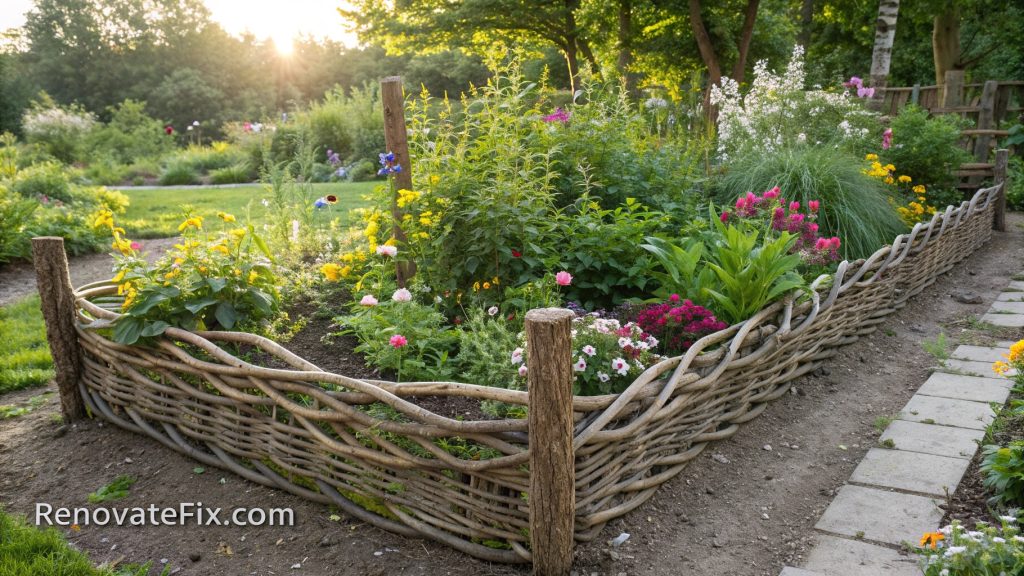
Harvest straight young branches during dormant period, push sturdy stakes into ground forming perimeter, weave branches horizontally between stakes in overlapping patterns.
Natural appearance complements informal garden styles while supporting soil structure.
24. Stained Glass Concrete Forms
Embed colored glass pieces into concrete mixtures, creating mosaic-like panels formed into planter walls that filter sunlight creating kaleidoscopic effects around garden spaces.
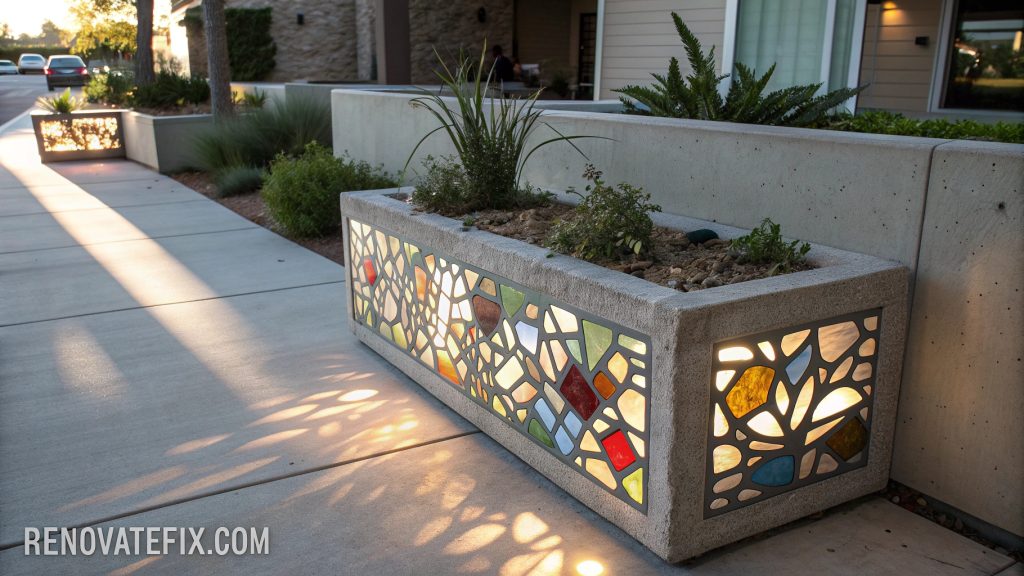
Arrange glass fragments in forms before pouring concrete, polish exposed surfaces after curing, seal with concrete-specific products ensuring water retention.
Sunlight transmission through colored elements creates constantly changing light patterns throughout day.
25. Vertical Log Stack Gardens
Arrange cut firewood logs vertically in circular formations, securing with exterior steel cables or bands, creating organic growing towers with excellent insulation properties for root development.
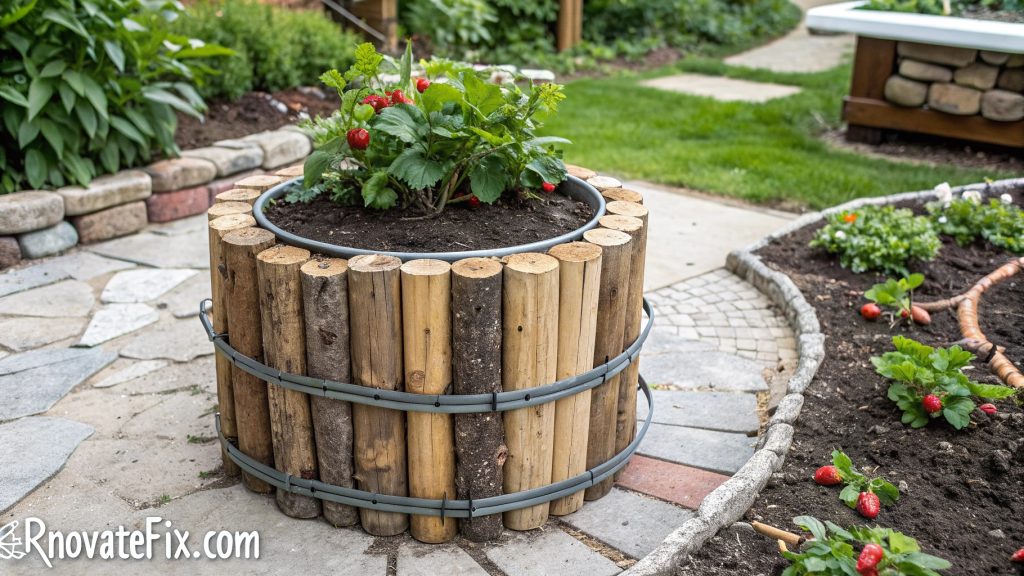
Select logs with similar diameters, position bark sides outward, fill interior with quality soil mix, logs gradually decompose enriching growing medium.
Vertical orientation maximizes growing space in minimal footprint while creating striking sculptural elements.
Conclusion
These 25 DIY raised planter box ideas demonstrate how functionality and creativity can combine to elevate your gardening experience.
Beyond simply holding soil, thoughtfully crafted planters become garden focal points while solving practical growing challenges.
By selecting materials that complement your existing landscape and lifestyle needs, your custom-built growing spaces will provide years of gardening enjoyment.
Whether you prioritize budget-friendly solutions, sustainability, mobility, or artistic expression, constructing your own planters allows complete customization impossible with mass-produced options.
As you implement these designs, remember that adaptation and personalization are key—modify dimensions, combine material approaches, or adjust heights based on your specific requirements.
With basic tools and materials, you can transform ordinary outdoor spaces into productive, beautiful growing environments tailored perfectly to your gardening vision.
